The Sloan Digital Sky Survey’s fifth generation collected its very first observations of the cosmos at 1:47 a.m. on October 24, 2020. This groundbreaking all-sky survey will bolster our understanding of the formation and evolution of galaxies—including our own Milky Way—and the supermassive black holes that lurk at their centers.
The just-launched SDSS-V will continue the path-breaking tradition set by the survey's previous generations, with a focus on the ever-changing night sky and the physical processes occurring in the objects that comprise our view of it. SDSS-V is designed to track these transitions, from the flickers and flares of supermassive black holes to the back-and-forth shifts of stars being orbited by distant worlds.
Dr. Sebastián Sánchez, researcher at the Institute of Astronomy at UNAM, Mexico City, explains that the SDSS “was one of the first projects that started free distribution not only of their data but also their entire analyses after a period of time reserved for collaboration members. It marked a before-and-after in the way this type of experiments were managed. Its impact was spectacular, both in the way astronomy works and the scientific exploitation of data, giving place to a democratization of science never seen before.”
Funded primarily by member institutions, along with grants from the Alfred P Sloan Foundation, the U.S. National Science Foundation, and the Heising-Simons Foundation, SDSS-V will focus on three primary areas of investigation, each exploring different aspects of the cosmos using different spectroscopic tools. Together these three project pillars—called “Mappers”—will observe more than six million objects in the sky, and monitor changes in more than a million of those objects over time.
“The SDSS allowed cosmology to evolve from a theoretical and speculative science, to an observational discipline. With extraordinary observations of millions of galaxies, it gave us a 3D vision of the universe that we use today to study galaxy evolution, large-scale structure formation, dark matter distribution and more, all with a degree of detail that was unimaginable a bit over 20 years ago. Without a doubt, SDSS-V Volume Mappers will open new windows to investigate yet-unknown aspects of this universe and will continue to revolutionize cosmology at all scales”, explains Dr. Gustavo Bruzual, researcher at the Institute for Radioastronomy and Astrophysics at UNAM, Campus Morelia, Mexico.
The survey’s Local Volume Mapper will enhance our understanding of galaxy formation and evolution by probing the interactions between the stars that make up galaxies and the interstellar gas and dust that is dispersed between them. The Milky Way Mapper will reveal the physics of stars in our Milky Way, the diverse architectures of its star and planetary systems, and the chemical enrichment of our galaxy since the early universe. The Black Hole Mapper will measure masses and growth over cosmic time of the supermassive black holes that reside in the hearts of galaxies as well as the smaller black holes left behind when stars die.
Regarding the mappers, Dr. Sebastián Sánchez explains that “for the first time UNAM has core leadership in one these projects, the Local Volume Mapper, of which we are solely in charge of its data reduction and analysis.” On the same subject, Dr. Vladimir Ávila of the Institute of Astronomy at UNAM, Mexico City, complements that “the Local Volume Mapper will make a spectroscopic map that will continuously cover from the smallest scales in our galaxy and nearby galaxies to areas thousands of times larger within them, bridging an important breach in our understanding between the physical processes at the scale of the stars and their surroundings, and the large scale evolution processes in our galaxy and other galaxies.”
Dr. Octavio Valenzuela of the Institute of Astronomy at UNAM, Mexico City, highlights that “the SDSS-V team at UNAM will provide analysis software for part of the data in this new phase, as well as a very specific part of the data processing”.
SDSS-V will operate out of both Apache Point Observatory in New Mexico, home of the survey’s original 2.5-meter telescope, and Carnegie’s Las Campanas Observatory in Chile, where it uses the 2.5-meter du Pont telescope. SDSS-V's first observations were gathered in New Mexico with existing SDSS instruments, as a necessary change of plans due to the pandemic. As laboratories and workshops around the world navigate safe reopening, SDSS-V's own suite of new innovative hardware is on the horizon---in particular, systems of automated robots to aim the fiber optic cables used to collect the light from the night sky. These will be installed at both observatories over the next year. New spectrographs and telescopes are also being constructed to enable the Local Volume Mapper observations.
“The robotic optical fibers being built for SDSS-V are part of some of the most complex spectrographs ever built. They will allow to repeatedly observe some regions of the sky to detect changes in them, as well as mapping the whole sky”, points out Dr. Carlos Román of the Institute of Astronomy at UNAM, Ensenada, Mexico.
“Following an over 20 year-old tradition of observing programs, the SDSS starts a new adventure with a whole-sky, multi-epoch, spectroscopic observation program in the optical and infrared”, explains Dr. Mariana Vargas of the Physics Institute at UNAM, Mexico City, and concludes: “I am very proud to keep participating in this new phase of the SDSS.”
 The Sloan Digital Sky Survey’s fifth generation made its first observations earlier this month. This image shows a sampling of data from those first SDSS-V data. The central sky image is a single field of SDSS-V observations. The purple circle indicates the telescope’s field-of-view on the sky, with the full Moon shown as a size comparison. SDSS-V simultaneously observes 500 targets at a time within a circle of this size. The left panel shows the optical-light spectrum of a quasar--a supermassive black hole at the center of a distant galaxy, which is surrounded by a disk of hot, glowing gas. The purple blob is an SDSS image of the light from this disk, which in this dataset spans about 1 arcsecond on the sky, or the width of a human hair as seen from about 21 meters (63 feet) away. The right panel shows the image and spectrum of a white dwarf --the left-behind core of a low- mass star (like the Sun) after the end of its life. Image Credit: Hector Ibarra Medel, Jon Trump, Yue Shen, Gail Zasowski, and the SDSS-V Collaboration. Central background image: unWISE / NASA/JPL-Caltech / D.Lang (Perimeter Institute).
The Sloan Digital Sky Survey’s fifth generation made its first observations earlier this month. This image shows a sampling of data from those first SDSS-V data. The central sky image is a single field of SDSS-V observations. The purple circle indicates the telescope’s field-of-view on the sky, with the full Moon shown as a size comparison. SDSS-V simultaneously observes 500 targets at a time within a circle of this size. The left panel shows the optical-light spectrum of a quasar--a supermassive black hole at the center of a distant galaxy, which is surrounded by a disk of hot, glowing gas. The purple blob is an SDSS image of the light from this disk, which in this dataset spans about 1 arcsecond on the sky, or the width of a human hair as seen from about 21 meters (63 feet) away. The right panel shows the image and spectrum of a white dwarf --the left-behind core of a low- mass star (like the Sun) after the end of its life. Image Credit: Hector Ibarra Medel, Jon Trump, Yue Shen, Gail Zasowski, and the SDSS-V Collaboration. Central background image: unWISE / NASA/JPL-Caltech / D.Lang (Perimeter Institute).
About IA-UNAM
The Instituto de Astronomía (IA) or Institute of Astronomy, is the oldest astrophysical research institution in Mexico. It belongs to UNAM, the best university in Mexico, a public university with over 360,000 students. IA’s objectives are to perform research in astrophysics, develop astronomical instrumentation, and educate high-quality human resources the undergraduate, Master’s and PhD levels. IA is also involved in the dissemination and outreach of astronomy and Science in general. The National Astronomical Observatory (Observatorio Astronómico Nacional) at both San Pedro Mártir (OAN-SPM), in Baja California, Mexico and Tonantzintla (OAN-T), in Puebla, Mexico, are part of the Institute. For more information, visit http://www.astroscu.unam.mx.
About IRyA-UNAM
The Instituto de Radioastronomía y Astrofísica (IRyA), or Institute of Radio Astronomy and Astrophysics, is an academic unit at UNAM, Campus Morelia, Mexico. We perform high-level and high-impact research in the areas of interstellar medium, star formation, evolved stars, high energy astrophysics, Galactic dynamics and structure, extragalactic astronomy and cosmology. We contribute to the education of high-level human resources through a postgraduate program, and we have close contact with society through diverse outreach programs. If you are interested in our Institute, visit the English version of our webpage, www.irya.unam.mx/web/en.
Project contact in Mexico:
Dr. Sebastián Sánchez, Instituto de Astronomía, UNAM
sfsanchez (
Media contact:
Unidad de Comunicación y Cultura Científica, Instituto de Astronomía, UNAM
uc3 (
Instituto de Radioastronomía y Astrofísica, UNAM
Dr. René A. Ortega Minakata
Outreach and Science Communication
IRyA UNAM Campus Morelia
Unidad de Comunicación y Cultura Científica, Instituto de Astronomía, UNAM
M en Ed. Brenda C. Arias Martín | media
Dra. Anahí Caldú Primo | translation, writing, editing
Dra. Gloria I. Delgado Inglada | coordination, editing
Readaptation to English
Dr. René Alberto Ortega Minakata, IRyA UNAM




